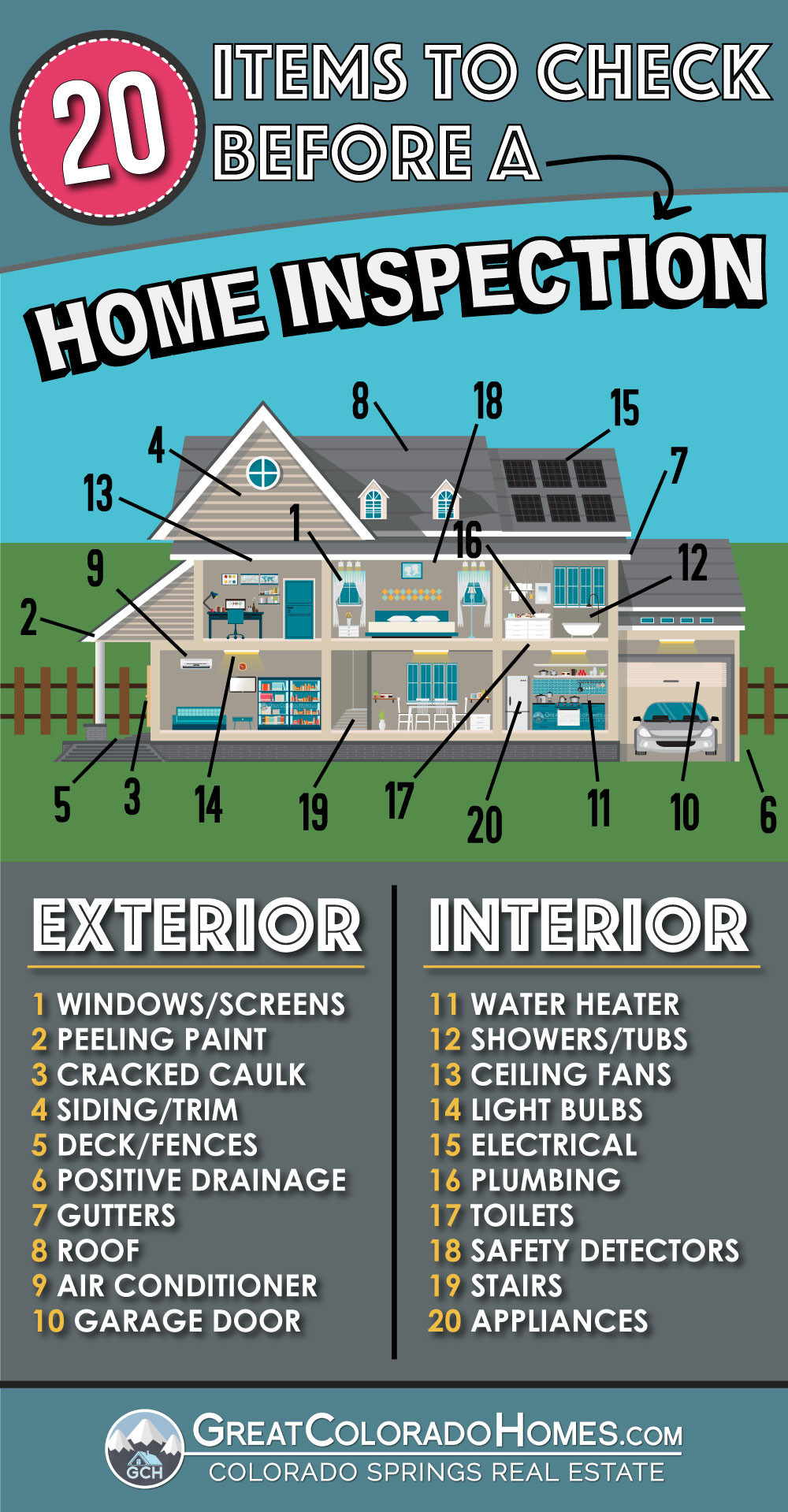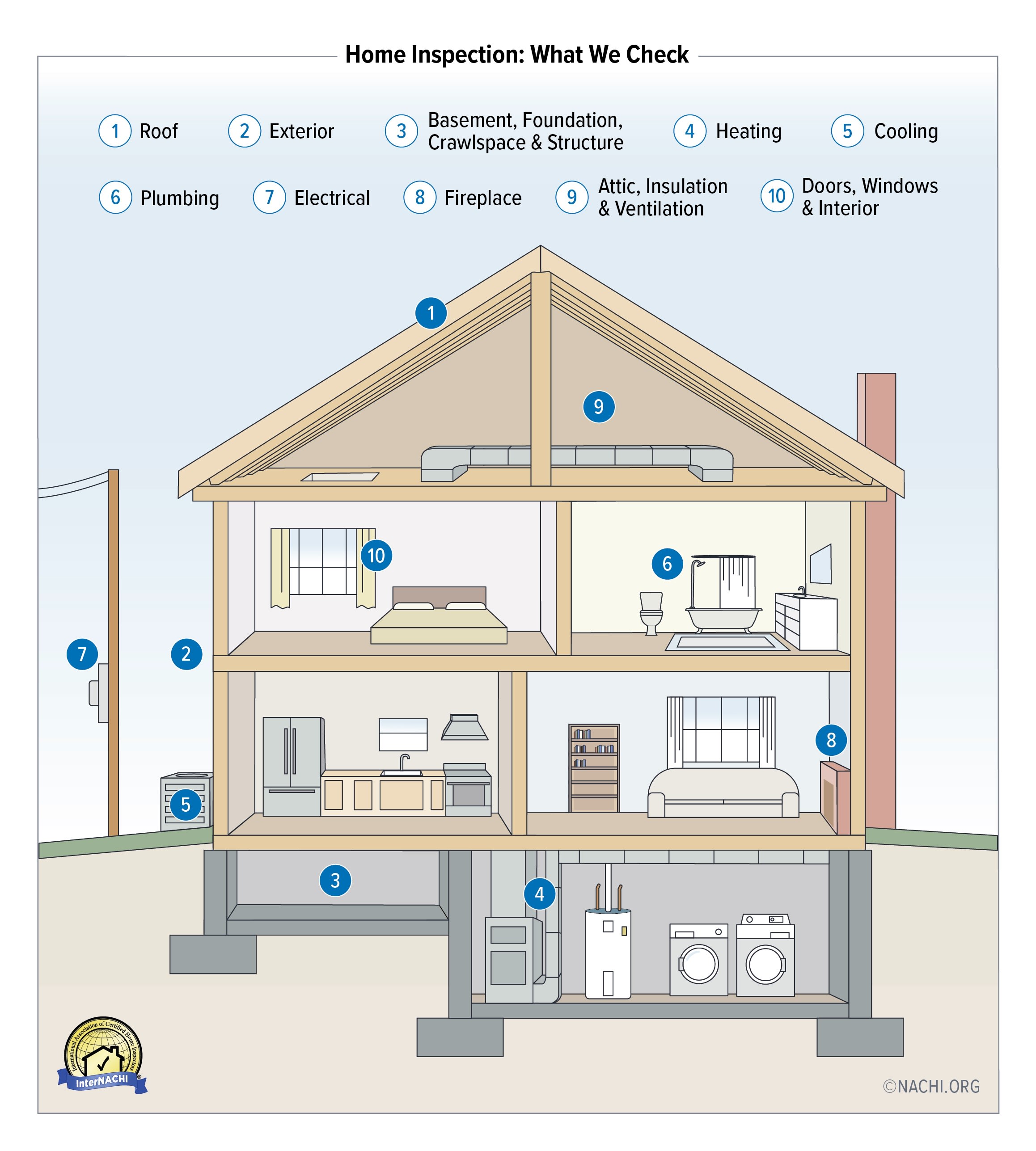What to Expect From Home Assessment: a Detailed Checklist and Its Value
Recognizing what to expect from a home assessment is crucial for both customers and sellers in the actual estate market. A complete examination gives an in-depth list that evaluates essential parts such as architectural integrity, major systems, and total residential or commercial property problem.

Significance of Home Inspections
The value of home examinations can not be overemphasized, as they serve as an important protect for both buyers and vendors in the property market. For customers, a home examination supplies an objective analysis of the building's problem, exposing prospective issues that may not show up during a laid-back walkthrough. This procedure aids purchasers make notified decisions and discuss repairs or price adjustments before closing, inevitably securing their financial investment.
Alternatively, vendors can take advantage of home evaluations by dealing with concerns proactively prior to listing their residential property. This can improve the home's bankability and potentially accelerate the sales procedure. A pre-listing inspection can also infuse confidence in possible purchasers, as it shows transparency and a commitment to keeping the building.
In addition, home evaluations add to the overall safety and habitability of residential homes. In summary, home inspections are an essential component of real estate deals, providing essential understandings that promote trust and transparency amongst all parties involved.
Key Parts of the List
A thorough home evaluation list encompasses several key components that make certain a comprehensive assessment of a home's condition. The very first element is the structural integrity, which consists of the assessment of the foundation, walls, and roof covering for any kind of signs of damage or deterioration. Next off, the list addresses major systems such as plumbing, electrical, and cooling and heating, analyzing their performance and safety and security.
Another important location is the outside of the home, which involves examining exterior siding, windows, doors, and roofing materials for wear and possible leaks. The list also covers interior aspects, including floor covering, wall surfaces, ceilings, and insulation, to identify any kind of problems that may impact convenience or safety.
Additionally, the checklist typically includes an examination of home appliances, guaranteeing they are in good functioning order. Lastly, the examination must analyze exterior spaces, consisting of outdoor patios, decks, and driveways, to evaluate their problem and security. Each of these parts plays an essential duty in providing a detailed understanding of the residential property, ultimately helping potential customers in making educated choices about their investment.
Common Concerns Located
Typically, home evaluations reveal a range of problems that can vary from minor repair work to significant safety problems. One widespread problem is the existence of water damages, commonly originating from leaking roofings, plumbing failings, or inadequate drain systems. Such damages can bring about mold growth, which positions health risks and may call for comprehensive remediation.

Another usual searching for involves electric systems. Obsolete wiring, overloaded circuits, or incorrect grounding can develop fire dangers and demand instant focus. Furthermore, problems with heating and cooling systems, such as insufficient maintenance or age-related ineffectiveness, can influence convenience and power prices.
Structural issues like broken foundations or endangered framework are additionally frequently kept in mind. These problems can cause significant repercussions if not addressed immediately. Pests such as rodents or termites may be discovered, showing the possibility for considerable property damages.
Finally, the condition of windows and doors frequently comes under examination. Poor seals can cause energy loss, while harmed structures or glass can affect protection and visual appeals. Identifying these typical concerns throughout a home inspection is critical for informed decision-making and ensuring the safety and security and durability of the building.
Getting Ready For the Assessment
Preparation is crucial for a successful home evaluation, ensuring that both purchasers and sellers can browse the process with confidence. Begin by arranging the examination at an equally hassle-free time, enabling ample ease of access to the building. For vendors, it is recommended to declutter and clean up the home thoroughly, as a tidy setting can positively affect the assessor's assessment.

For purchasers, preparing involves assembling a list of particular worries or locations of passion to review with the assessor. It is advantageous to accompany the examiner throughout the walkthrough, as this offers firsthand understanding into the property's condition. Ensuring that all energies are operational can aid the examiner in conducting a detailed evaluation. By taking these preparatory actions, both parties can set the phase for a reliable and detailed home inspection experience.
Post-Inspection Activities
After the examination is full, both purchasers and sellers have to take particular actions to attend to the findings. For purchasers, the initial step is to very carefully assess the examination record, keeping in mind any type of major problems that may affect their choice. This file works as a vital device for arrangement. Purchasers might request repair work or debts from the vendor based on substantial issues, such as architectural troubles or outdated systems.
Vendors, on the other hand, should analyze the searchings for this to figure out which issues they can address before wrapping up the sale. Fixing minor fixings can improve the residential or commercial property's allure and possibly cause a greater sale cost. Sellers might choose to divulge concerns to prospective buyers, promoting openness and count on.
In cases where considerable repairs are required, both parties might take advantage of getting price quotes or quotes from certified professionals. This permits notified conversations concerning repair work responsibilities. Finally, it is vital for both buyers and vendors to maintain open lines of communication throughout this procedure to guarantee a smooth transaction. By taking these post-inspection actions, both events can browse the arrangement landscape with self-confidence and quality.
Verdict
Home examinations act as an essential component in the realty deal procedure, ensuring a complete examination of a residential property's condition. By sticking to a thorough list, possible issues can be determined, protecting the rate of interests of both buyers and vendors. Resolving these worries not only enhances safety and security and habitability yet likewise help in economic negotiations. Inevitably, the value of home inspections can not be overemphasized, as they advertise informed decision-making and add to find out here now a smoother realty experience.
For buyers, a home assessment gives an impartial evaluation of the building's problem, exposing potential concerns that might not be visible throughout a laid-back walkthrough.Alternatively, sellers can benefit from home examinations by resolving issues proactively prior to noting their residential property (Home see it here Inspection Lockhart).Commonly, home evaluations reveal a variety of problems that can vary from minor repairs to substantial safety worries. Identifying these usual problems throughout a home evaluation is critical for educated decision-making and making certain the safety and longevity of the home
Prep work is essential for a successful home evaluation, making sure that both vendors and purchasers can navigate the procedure with confidence.